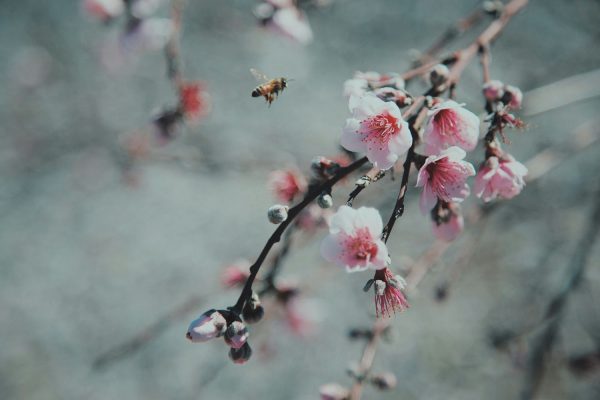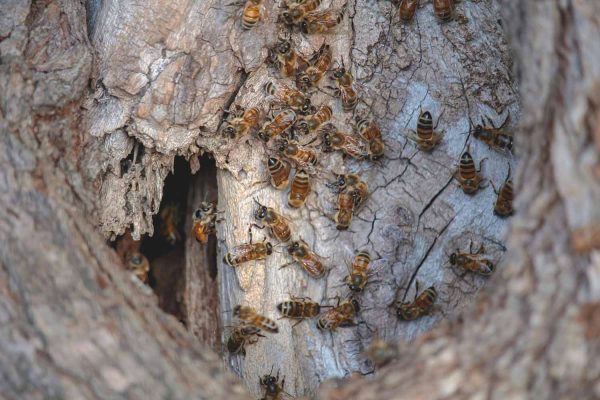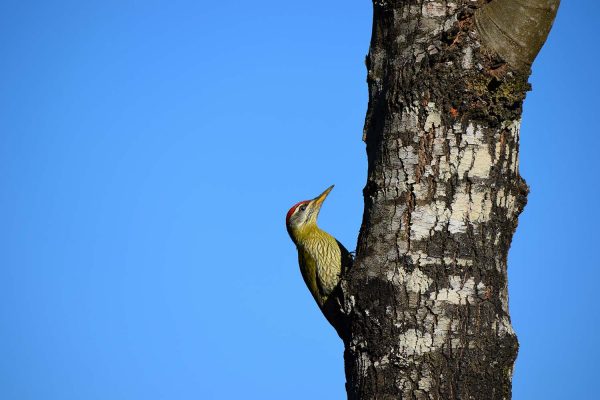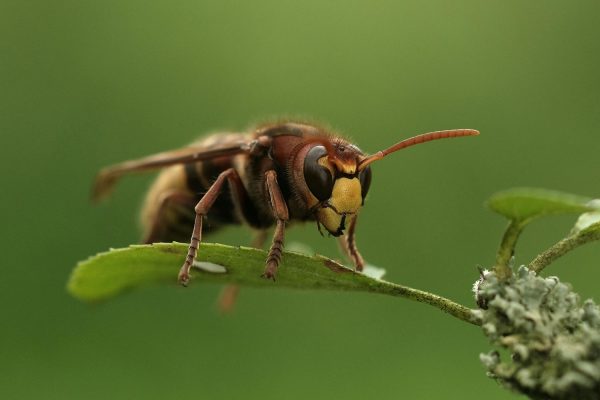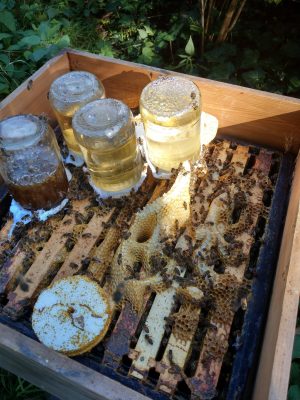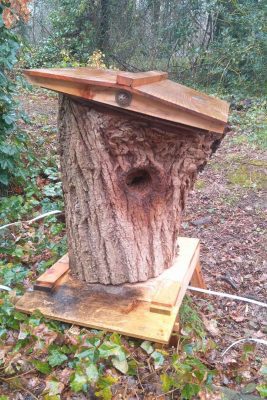Imagine a world without honeybees
It sounds like a plot from a dystopian novel, but it’s a looming reality we might face if we don’t address the multitude of threats these tiny, yet mighty, creatures are battling, especially during winter.
You see, the survival of honeybees isn’t just about honey; it’s about our survival too. Bees are key pollinators and without them many of our crops and, consequently, our food supply are in jeopardy.
Honeybees face a whirlwind of threats throughout the year and their demise over the years has been well-documented. So what can we do about it?
Firstly, let’s understand the threats to these tiny, vital creatures as this will help us look at ways in which we need to act, as it’s about our survival too.
1. Insect pests and diseases – the invisible assassins
Winter for bees is like an epic tale of survival against invisible assassins. Bacterial and viral infections are more rampant than ever with many chemical-based treatments that could help save bees now banned due to environmental concerns.
Imagine a bee colony fighting a war against an invisible enemy, and now more defenceless than ever with their medicinal arsenal taken away.
2. Mice – the furry invaders
Mice are small and incredibly sneaky creatures that invade beehives to seek warmth for themselves in the autumn. They don’t just squat, however, they feast on the honeycomb, stress the bees and, in some cases, turn cannibalistic!
Our tiny little heroes are often powerless against the horror story that unfolds within the hive as these furry invaders create chaos.
3. Badgers and woodpeckers – the midnight marauders
Badgers and woodpeckers are like the cunning villains of this story.
Badgers can be quite burly brutes as they can tear apart hives to get to the bees, enduring stings with a stoic resolve; but striking when bees are in a winter slumber is smart as bees are less able to retaliate.
Woodpeckers are clever too – tapping away with their sharp beaks to find the weakest spots in the hive to break in.
Cunningly choosing the coldest days for their heist ensures an easier tasks as our bee guardians are immobilised.
4. Wasps – a domination of the weak
Our domesticated bee colonies, already weakened, are becoming sitting ducks to a new threat: wasps. These yellow-striped marauders, especially as wasp colonies expand their reign due to longer, warmer autumns, are becoming formidable foes for our bee heroes.
It’s like a war where the enemy’s army is constantly growing in strength and number.
5. The Asian Hornet – a new monster on the block
Enter the Asian Hornet, an invasive and destructive species that’s turning into a relentless predator for honeybees. Rare a few years ago, they’re now crossing borders in increasing numbers, preying on bees with terrifying efficiency.
6. Birds – the feathered thieves
Even birds, usually symbols of peace, have joined the fray. From robins to magpies, they started to snatch bees mid-flight for a snack. It’s a new survival strategy for these birds, driven by an early urge to breed and a lack of natural food resources, Another deadly challenge for the bees.
7. Varroa Mites – the tiny terrors
Varroa mites, resembling dust mites, have caused an epidemic. They not only feed on honeybee larvae but also transmit deadly viruses. These mites are bloodsuckers, a virus spreader, bypassing all of the bees’ evolutionary defences with a needle-like precision that leaves the bees vulnerable and diseased.
8. Environmental Challenges – the final frontier
The environmental challenges our honeybees face are the silent, creeping doom. The climate and changing seasons have a subsequent impact on the lifecycle stages and survival of the honeybee. This, in turn, has an impact on us.
- Starvation: Warm late summers lead to overpopulation in bee colonies, and their winter stores run out quickly. Without adequate food stores, the bees face a cold, hungry winter.
- Aging Crisis: Mild winters prevent bees from entering a dormant state, causing them to age and die sooner. Imagine a colony, once buzzing with youth, turning into a nursing home with no young bees to rejuvenate the population.
- Swarming Miscalculations: Late swarming due to mild autumns leads to poorly mated queens and dwindling bee populations. It’s like a kingdom dwindling because the royal lineage is failing.
Sometimes entire colonies vanish leaving beekeepers with empty hives and heavy hearts.
- Hive Insulation Disaster: Modern hives, a marvel of human engineering, are ironically part of the problem. The lack of insulation leads to dramatic temperature fluctuations, unlike the stable warmth of a natural hollow tree. The bees are living in homes that can’t protect them from the harsh winter elements.
- Moisture Menace: Modern hives, with their thin wood, fail to keep out moisture, unlike the sturdy, dry interiors of hollow trees. It’s akin to living in a house with a leaking roof during a storm.
What’s next? Our future depends on solutions.
The plight of the honeybees in winter is a saga filled with villains and challenges. It’s a dramatic fight for survival, not just for the bees, but for us too.
Without bees, crops won’t get pollinated, food supplies will dwindle, and ecosystems will crumble. The bees are fighting, but the question remains: will they – and by extension, we – emerge victorious.
The answer lies not just in the resilience of these incredible insects but in our willingness to change, adapt, and fight alongside them.
As beekeepers and environmental stewards, we must rally to their defence. Our very future may depend on it.
